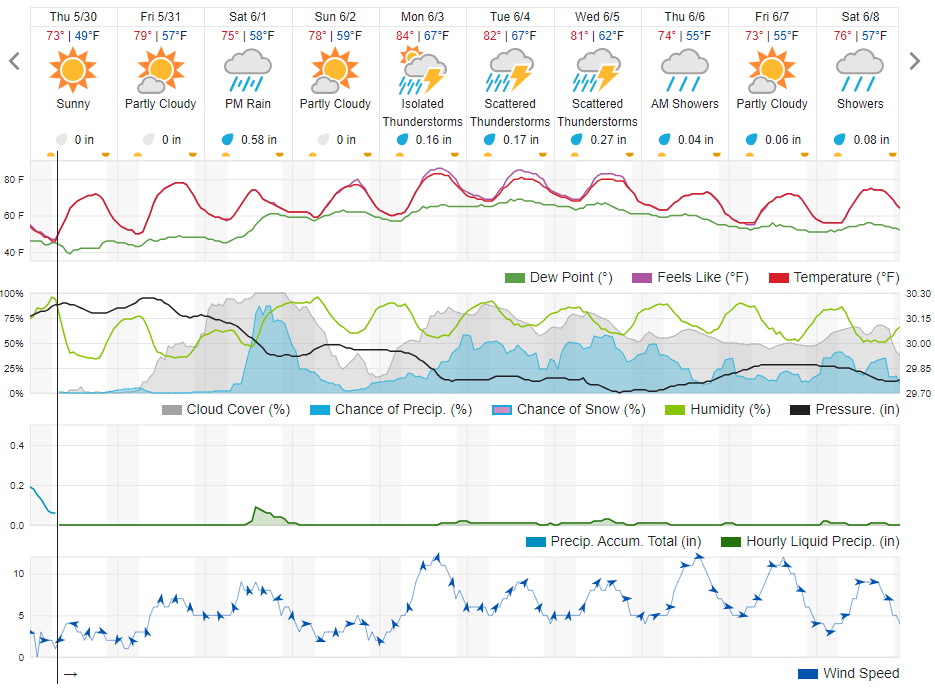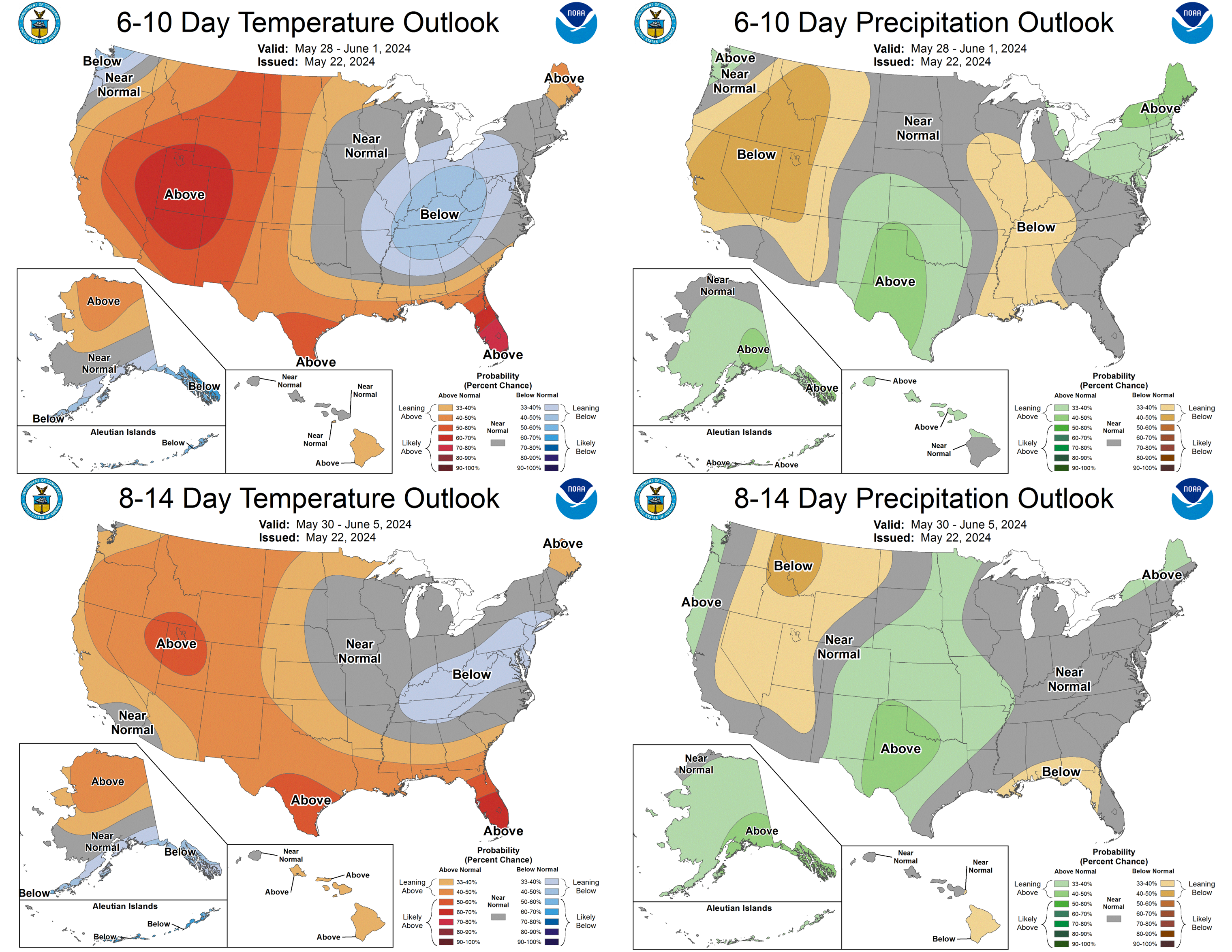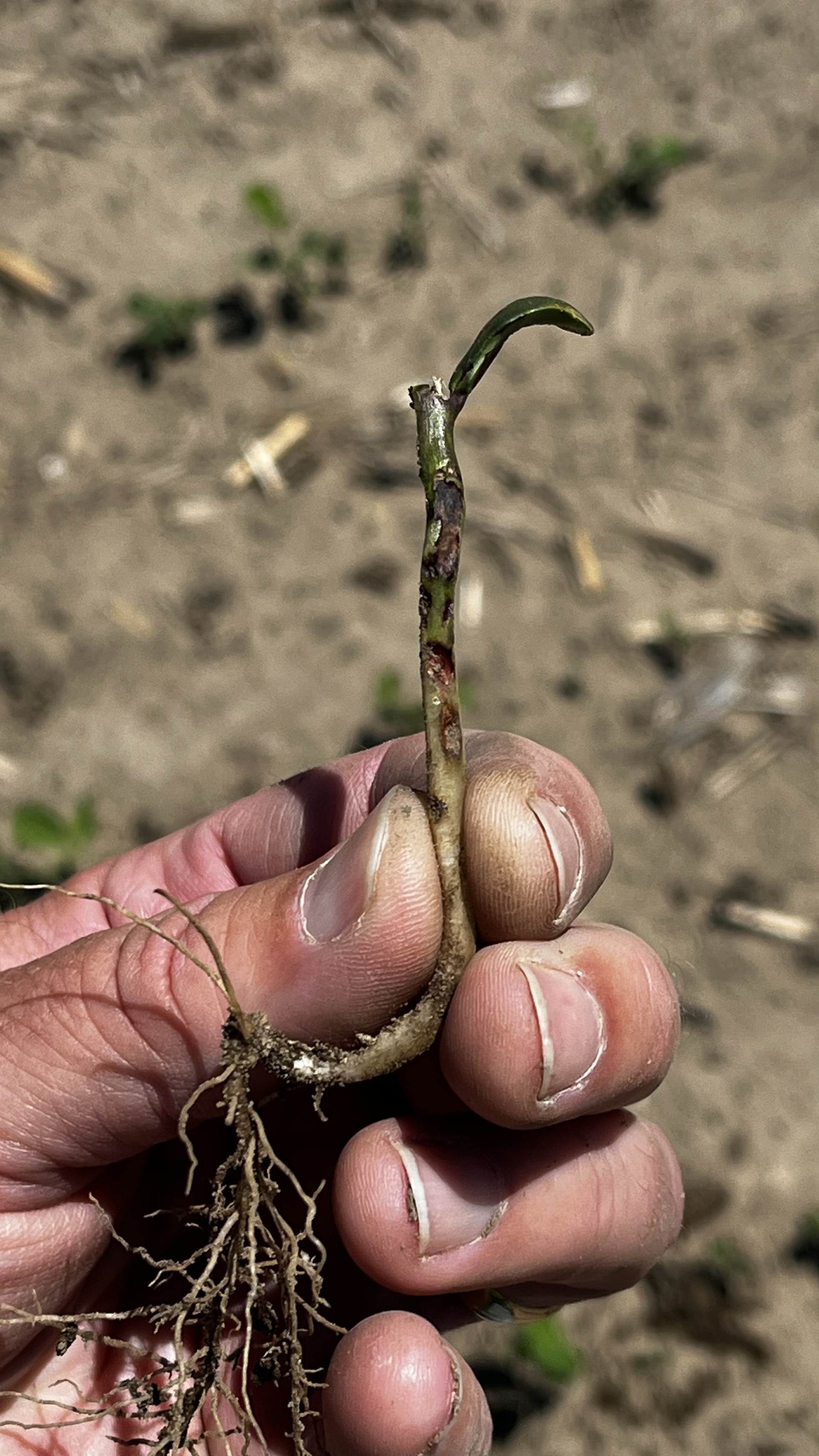Southwest Michigan field crops update – May 30, 2024
Significant planting progress made for both corn and soybeans. Potatoes began flowering. Stripe rust in wheat continues to be confirmed throughout the state.

Weather
This past week saw an overall decrease in temperatures, particularly over the weekend and into the early part of this week. However, temperatures are expected to increase. Precipitation in the early part of this week slowed down field work. Scattered showers will continue over the weekend and into early next week. Potential evapotranspiration rates will be high this upcoming week, which will hopefully help dry out the soil.


Crops and pests
Soybean and corn planting is nearly finished thanks to the warm, dry weather last week. As of May 26, the United States Department of Agriculture National Agricultural Statistics Service report puts corn at 75% planted and soybeans at 66% planted. Again, southwest Michigan is most likely farther along than the rest of the state. Recent precipitation has halted field work for now, and some fields have standing water. Both crops are progressing faster than historic through vegetative stages. True armyworm and black cutworm have both been found in early planted crops following cover crops. Corn is most susceptible to cutting damage from emergence to V5.
Seedcorn maggot has been a problem particularly in soybeans. Adults are now emerging from fields, but risk of damage is expected to decrease now that most cover crops have been killed and soil temperatures are warm enough to facilitate quick emergence. Enviroweather has a seedcorn maggot model that can help producers estimate and avoid damage. Deer damage is also beginning to appear in fields. For producers who use deer deterrent sprays, now is a good time to apply while the plants are small. Fields with large woodland borders are most likely to experience economic deer damage.

Winter wheat is at Feekes stage 10.5.4, at which point grain fill begins and the kernel length is established. Stripe rust has affected many wheat fields in central Michigan counties and is present in southwest Michigan. Some growers might find wheat with yellow stripes but no pustules on the leaves. This is indicative of adult plant resistance, and it may still be stripe rust but just on a plant that is more resistant to it. Stripe rust on wheat does not spread to corn. Fungicides that prevent fusarium head scab are often also effective against stripe rust. More information on fungicide options and timing is available in the Michigan State University Extension article “Wheat stripe rust outbreak and Fusarium head scab risk prediction” and from the May 30 Field Crops Virtual Breakfast.

Potatoes began to flower late last week. Tuber initiation continues for the majority of the crop, and many fields are approaching row closure. Aerial applications began this week and will continue throughout the season. Potato leafhopper and Colorado potato beetle are present in the area.
Alfalfa cutting for highest quality should have begun nearly two weeks ago. With the ideal planting weather, many alfalfa fields are still standing and will be cut later than ideal. Potato leafhopper is present in fields. Young stands and regrowth are most vulnerable to potato leafhopper damage. Use a sweep net to determine leafhopper populations, as hopperburn (v-shaped yellowing of leaves) is often visible only after the damage has already been done to the plants.

Black cutworm moths are present in the state. Bucket traps in Berrien (near Berrien Springs) and St. Joseph counties have caught the following:
|
Date |
Berrien |
Centreville |
Sturgis |
|---|---|---|---|
|
4/8 |
0 |
2 |
1 |
|
4/15 |
0 |
12 |
4 |
|
4/22 |
0 |
16 |
3 |
|
4/29 |
4 |
10 |
3 |
|
5/6 |
5 |
46 |
0 |
|
5/13 |
8 |
25 |
0 |
|
5/20 |
1 |
0 |
0 |
|
5/27 |
1 |
0 |
0 |
True armyworm moths are present in the state. Bucket traps in Berrien (near Berrien Springs) and St. Joseph counties have caught the following:
|
Date |
Berrien |
Centreville |
Sturgis |
|---|---|---|---|
|
4/8 |
0 |
0 |
0 |
|
4/15 |
1 |
0 |
0 |
|
4/22 |
0 |
0 |
14 |
|
4/29 |
0 |
0 |
20 |
|
5/6 |
0 |
0 |
14 |
|
5/13 |
4 |
0 |
7 |
|
5/20 |
1 |
0 |
20 |
|
5/27 |
2 |
0 |
21 |
.jpg?language_id=1)
Managing wheat disease, presented by Michigan State University (MSU) pathologist Marty Chilvers, was the topic for the MSU Extension Field Crops Virtual Breakfast this week. He talked about stripe rust, fusarium head scab, management timing and practices for these diseases. Recordings of this and all the Virtual Breakfast meetings are closed-captioned and available at the Field Crops Virtual Breakfast webpage and the MSU Extension field crops team social media platforms: Facebook, Spotify, YouTube, Apple Podcasts and Twitter.



 Print
Print Email
Email